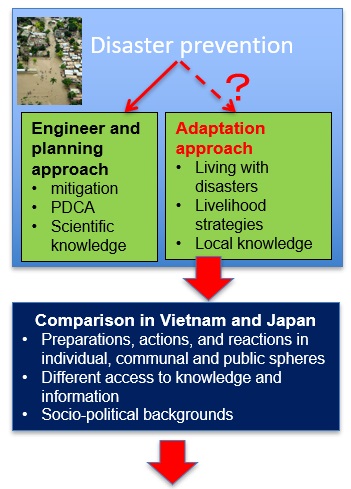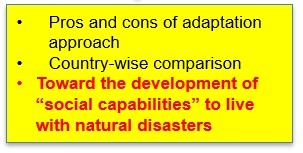Example
Developing “social capabilities" to live with natural disasters
Social background
Mitigation of natural disaster by engineering and planning approach is a typical measure for disaster prevention. In the disaster-prone Asian countries, however, it is also noteworthy to enhance social capabilities and resilience by adaptation approach, in which ordinary people try to live with disasters, and even to get benefit from disasters.
Objectives
Taking examples in Vietnam and Japan, the project tries to examine pros and cons of adaptation approach by comparing preparations, actions and reactions to natural disasters (especially floods) in individual, communal and public spheres. It also compares main factors that differentiate these actions, such as access to different knowledge and information as well as socio-political backgrounds. Finally we try to consider practical validity of the approach in two countries, and examine policy measures to develop “social capabilities” to live with natural disasters.
Future plan and expected effects
We have already started to conduct field surveys about people’s adaptation strategies to floods and climate change-related disasters in Vietnam. The next step is to initiate field surveys in Japan, and to compare pros and cons of adaptation approach and to examine policy measures to develop “social capabilities” in both countries. We expect that the both disaster-prone societies can learn each other from on-the-ground comparison, and build a partnership for further cooperation


Representative
